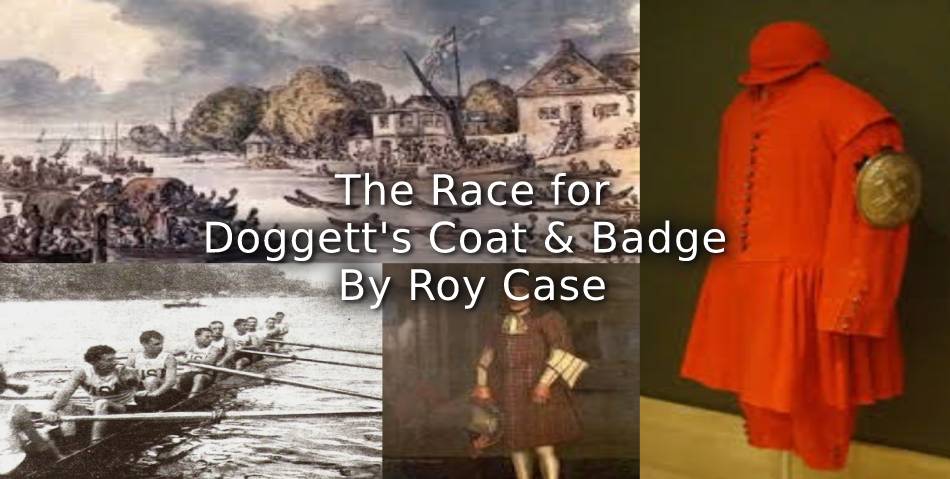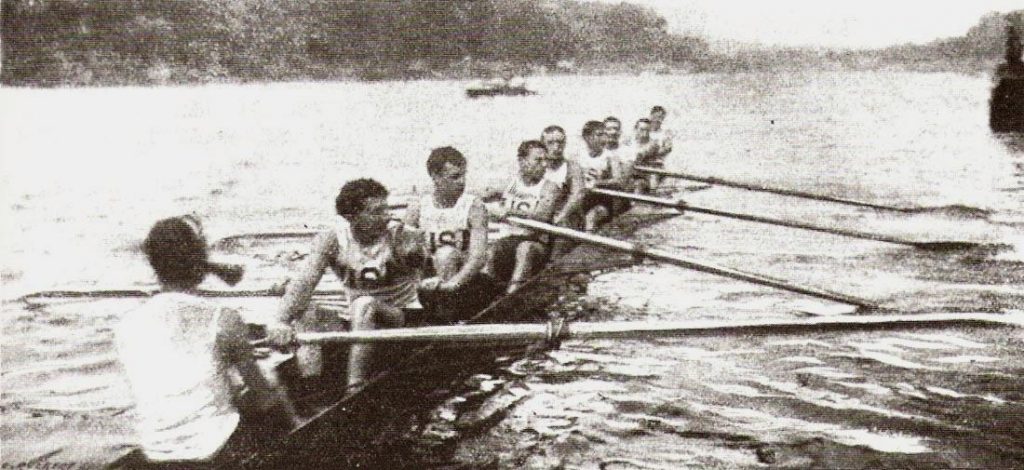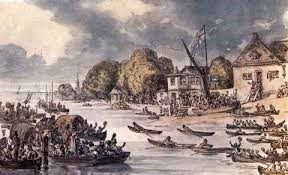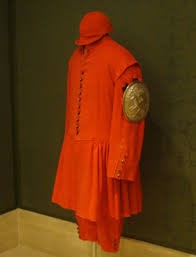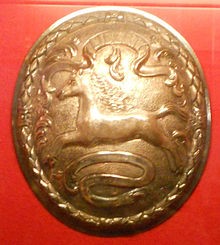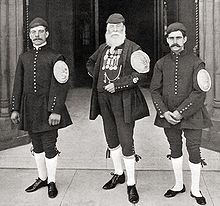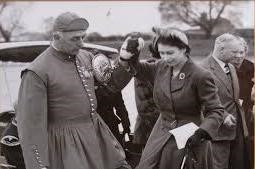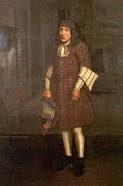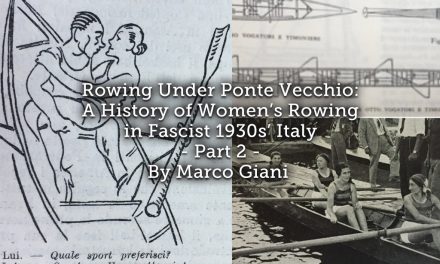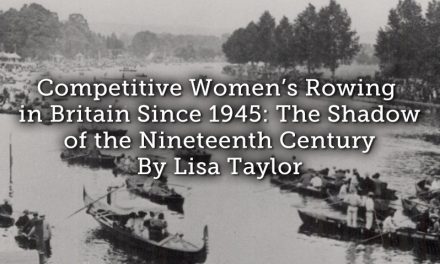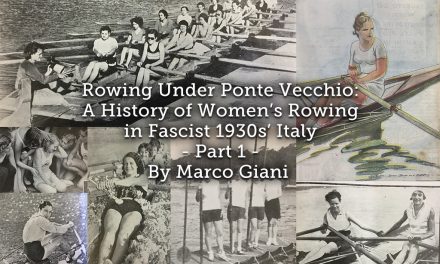The ancient sport of rowing was initially included in the programme of events for the first international Games of the Olympiad in modern history. Organised by the International Olympic Committee [IOC] in 1896, the Summer Olympics were originally scheduled to be held in Athens but the events were cancelled due to bad weather.
Subsequently it has been part of the Olympics programme since its debut in the 1900 Summer Olympics regatta, when four events were contested on the Seine in Paris, between the Courbevoie Bridge and the Asnières Bridge. In the beginning only men were allowed to compete until women’s events were introduced in the 1976 Summer Olympics in Montreal, Canada.
Currently Sport England invests around £3 million a year in British Rowing, helping develop its growth through participation, and encouragement of grassroots talent. In addition to the funding provided centrally, Sport England also provides additional funding to British Rowing clubs through approved programmes.
- USA eight at 1900 Olympics
And it seems to be paying off handsomely, for in the 2008 Olympic Games, held in Beijing, China, the Great Britain Rowing Team enjoyed its most successful Games of the modern era, topping the rowing medal table with two gold, two silver and two bronze medals. However, in the 2012 London Olympic Games, the GB Rowing Team went one better, when it was ranked the top rowing nation for the second successive Games, winning a record nine medals, on home water at the Olympic rowing regatta at Eton Dorney. With qualifying boats in 13 of the 14 events, the medal haul included four gold, two silver and three bronze, surpassing the eight medals won at the Olympic rowing regatta in Henley-on-Thames in 1908. What’s more, Great Britain led the rowing medal table for the third successive Games in the 2016 Olympic Games in Rio de Janiero, Brazil, when it accumulated a total of five medals, including three gold and two silvers, on the Lagoa Rodrigo de Freitas, in the shadow of the iconic statue of Christ the Redeemer.
In 1877 a series of meetings held in Putney resulted in the formation of the Metropolitan Rowing Association two years later. Formerly known as the Amateur Rowing Association, British Rowing is the governing body for the sport, and a member of the British Olympic Association and the International Rowing Federation.
However, the celebrated University Boat Race, represented by crews from the Cambridge University Boat Club and the Oxford University Boat Club, pre-dates the modern Olympics by more than half-a-century. Rowed annually between men’s and women’s open-weight eights on the River Thames in London, the men’s race was first held in 1829, and has been held once a year since 1856, except for a break during the First and Second World Wars. The first women’s race was not held until 1927, and has been held yearly since 1964. In 2015, the women’s race took place on the same day, and over the same course as the men’s race, for the first time in 2015, and since 2018 the combined event has become known as ‘The Boat Race’. It is estimated in excess of 250,000 people watch the race from the banks of the river each year, with a further 15 million watching on television. The course covers a 4.2-mile stretch of the Thames in West London, from Putney to Mortlake. Members of both teams are traditionally known as ‘blues’ and each boat as a ‘blue boat’, with Cambridge wearing light blue and Oxford in dark blue. Cambridge has won the men’s race a total of 84 times, with Oxford claiming victory on 80 occasions, with one race declared a dead heat. In the women’s race, Cambridge have won 44 times, and Oxford 30 times.
And yet there is one ancient rowing race which comfortably pre-dates them all. The Doggett’s Coat and Badge is the prize, and also the name afforded to the oldest boat race in the world, which despite its fascinating history, has largely been eclipsed by the much more famous Boat Race.
Up to six Thames apprentice watermen have competed annually for the prestigious honour of Doggett’s Coat and Badge since 1715. Steeped in tradition it is held on the River Thames, over a distance of 4 miles 5 furlongs, between London Bridge and Cadogan Pier, Chelsea. Originally it was raced on the 1 August, against the outgoing ebb tide, in boats used by watermen to ferry passengers across the Thames. Currently it is raced in contemporary single sculling boats, to coincide with the incoming flood tide.
The winner’s prize is a time-honoured waterman’s red coat, adorned by the addition of a silver badge. Each competitor completing the race is presented with a replica of the Doggett’s Badge for their lapel, silver for the winner, and bronze for the rest. The presentation ceremony is held at the Watermen’s Hall, built in 1780, it remains the only original Georgian hall in the City of London. The Company of Watermen dates back even earlier, having been established in 1555, by an Act of Parliament to regulate watermen and wherrymen carrying passengers under oars on the Thames. Monetary prizes are also presented to the rowing clubs of the participants by the Worshipful Company of Fishmongers, or Fishmongers’ Company, an eminent member of a guild of fish sellers and seafood in the City. In the 18 and 19 centuries, winning the Doggett’s Coat and Badge, usually attracted significantly more trade for the waterman, and even though this is no longer the case, success in the Doggett’s Coat and Badge remains especially prestigious.
The race was instigated by the popular Irish actor and comedian, Thomas Doggett [circa 1640-1721]. Born in Dublin, Doggett moved to London around 1690, and made his first stage appearance in London in 1691, as Nincompoop in Thomas D’Urfey’s ‘Love for Money’. Doggett was held in high regard by his contemporaries, and was associated with the management of the Drury Lane Theatre, and the Theatre Royal, Haymarket, where he continued to play comedy parts until his retirement in 1713.
-
Early winners of the Doggett’s Coat and Badge
Left to right J.J. Turferry [1900], W.H. Campbell [1850], A.H. Brewer [1901]
J.J. Turferry [1900], W.H. Campbell [1850], A.H. Brewer [1901]
At the time Doggett relied heavily upon the watermen of the Thames, regularly employing them to convey him between his workplace in the City of London and his residence in Chelsea. Legend has it that one stormy night in 1715, Doggett fell overboard while crossing the Thames near Embankment, and was rescued by a recently apprenticed waterman. Although the Fishmongers’ Company has subsequently dismissed the story as folklore, the tale suggests Doggett was so impressed by the young man’s skill, he was inspired to create a rowing race, open to the fastest of six young Thames watermen in their first year of ‘freedom’ from their apprenticeship. Offering a wager to the winner, held over a course between ‘The Swan’ pub at London Bridge and ‘The Swan’ pub at Chelsea. Although these establishments no longer exist, the starting points have remained the same to this day. Rowing wagers were common in the early 18 century, and men known as ‘wagermen’, who specialised in rowing for prize money, were not allowed to compete. A staunch political Whig, Doggett’s wager was exceptional, for he insisted the race take place on the 1 August each year, to commemorate the accession of George I of the House of Hanover to the throne in 1714. He stipulated the wager would be for a traditional red waterman’s coat, adorned with a silver badge, designed by Doggett himself, which represented ‘Liberty’, and displayed an image of the horse of the House of Hanover.
The race, specifically for Thames watermen licensed to drive passenger boats, and lightermen licensed to drive cargo holding boats, was organised and financed by Doggett from 1715 until his death in 1721. In his will, he left specific instructions for the continuation of the race, which is now organised by the Fishmongers’ Company. In 1722, the race was renamed the ‘Doggett’s Coat and Badge’, having previously been known as the ‘Brunswick Competition’.
Following Doggett’s legacy, the first winner of the Doggett’s Coat and Badge in 1722 was William Morris, a waterman from Rotherhithe, who was born in 1699.
Eight years later, in 1730, the race was won by the champion pugilist, Jack Broughton [circa 1703-1789]. An English bare-knuckle boxer, Broughton developed the first basic set of boxing rules, prior to the development of the Marquess of Queensberry rules in the 1860s. A farmer’s son, born in the village of Baunton, Gloucestershire, it is said he left home at the age of 12 and travelled to Bristol, where he fought local lads, well known for their belligerent appetite. On his death in 1789, the Annual Register, asserted Broughton ‘was originally bred a waterman’. Over time several changes were made to the rules relating to the race. In 1769 the Fishmongers’ Company established strict regulations to ensure fair competition. In the beginning lots were drawn at Watermen’s Hall, but due to unfair practices are now drawn at Fishmongers’ Hall.
The original intention was for competitors to race in the boats of their passenger ferrying trade. At first these boats were four-seater passenger wherries, which could take nearly two hours to row the distance, but later it was agreed all vessels must be ‘common scullers boats’. Contemporary single sculls are now used and take about 30 minutes to race the course. As the population of watermen has been in decline since 1988, applications are now being accepted from previously unsuccessful competitors, still in their second and third years of freedom.
In 1887 the Doggett’s Coat and Badge Race was won by William Giles East [1866-1933], who was born close to Lambert Pier in London. He spent his whole life on or by the Thames, and became a waterman’s apprentice in 1882. Bill won the English Sculling Championship in 1891, but never defended his title. Seven years later, he was appointed a waterman to the Queen. East retired from professional sculling around 1903, and became barge-master to the King in 1906. Like many other champion scullers, in later life became a publican, and ran the Prince’s Head Hotel and then the Pigeon Hotel at Richmond.
In 1894, the race was won by Frederick Pearce of Hammersmith, in 32 minutes, 22 seconds. According to the rules of the race it should have been rowed against the tide, but it seems flood tide was still running when Frederick passed the winning post. In 1916, the race was won by his son, Frederick William Pearce.
During World War 1 and World War 2, all races were suspended, and not resumed until 1920 and 1947 respectively, when extra races were held to make up for those missed during the war years.
Born and raised in Wapping, the winner in 1973 was the former waterman and lighterman, Bobby Prentice, in the fastest time of 23 minutes 22 seconds. The skipper of a pleasure boat ferrying tourists, Bobby’s prowess as a rower led him to attempt to row the Atlantic Ocean in 2005. After seven weeks rowing, he spent forty-nine hours in a life raft, before being picked up by a tanker. Three years later he made another attempt, but this time with a crew of four, which resulted in several breakdowns and he quit the quest after ten days.
In 1992, Claire Burran, the sister of Glen Hayes, the winner of the Doggett’s Coat and Badge Race in 1988, was the first woman to compete in the race. She finished in third place in rough conditions. The only one other female to compete in the race is Kate Saunders.
- Thomas Doggett
The race has subsequently given its name to at least two pubs, The Doggetts Coat & Badge, on the southern end of Blackfriars Bridge and The Coat and Badge, Lacy Road, Putney. There is also a pub in Margate named The Doggett Coat and Badge. Thomas Doggett died a pauper, and is buried in the churchyard of St John’s Church, Eltham, where there is a plaque mounted in his memory displayed outside of the church.
Let your oars like lightening flog it
Up the Thames as swiftly jog it
And you’d win the prize of Doggett
The Glory of the river

